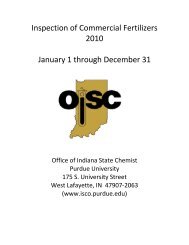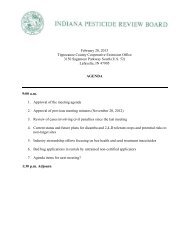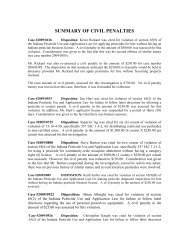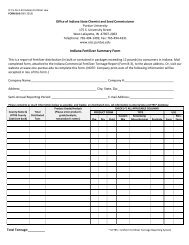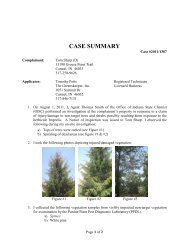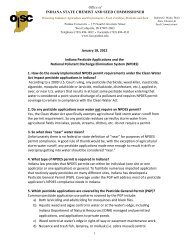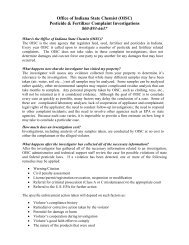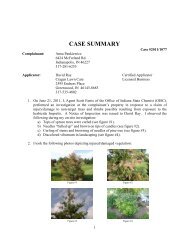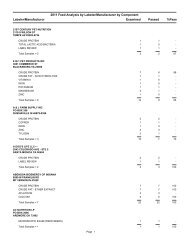Indiana Registry of Soil Scientists Performance Objectives for the ...
Indiana Registry of Soil Scientists Performance Objectives for the ...
Indiana Registry of Soil Scientists Performance Objectives for the ...
You also want an ePaper? Increase the reach of your titles
YUMPU automatically turns print PDFs into web optimized ePapers that Google loves.
2. Differentiate <strong>the</strong> various classes <strong>of</strong> pesticides, insecticides, fungicides, herbicides, and<br />
nematicides.<br />
3. Explain <strong>the</strong> behavior <strong>of</strong> organic chemicals in soil, give a brief description <strong>of</strong> volatility<br />
sorption, leaching, contamination <strong>of</strong> groundwater, chemical reactions, microbial<br />
metabolism, plant adsorption, and persistence in soil.<br />
4. Understand <strong>the</strong> effects <strong>of</strong> pesticides on soil organisms.<br />
5. Explain <strong>the</strong> key parameters affecting movements <strong>of</strong> pesticides through soil 1) Half life<br />
<strong>for</strong> biodegradation <strong>of</strong> <strong>the</strong> pesticide and 2) The partition coefficient (written as Kd and<br />
Koc).<br />
6. Describe how Kd and Koc differ.<br />
7. Describe <strong>the</strong> factors affecting biodegradation: photodegradation, hydrolysis, and<br />
microbial degradation.<br />
8. Explain pesticide movement into tile drains.<br />
9. Explain why nitrates move in soil and can potentially contaminate groundwater.<br />
10. Describe bioaccumulation/bioconcentration.<br />
11. Discuss land application <strong>of</strong> sewage sludge and <strong>the</strong> potential buildup <strong>of</strong> heavy metals.<br />
10




